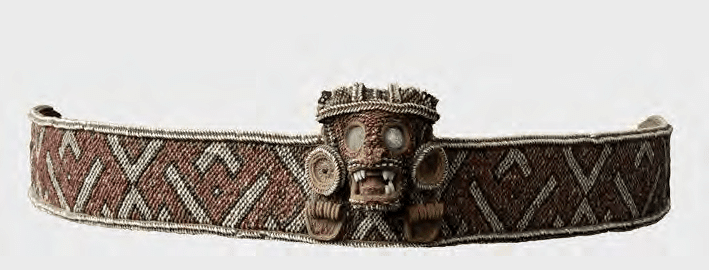Taino Revival: Critical Perspectives on Puerto Rican Identity and Cultural Politics is one of those vital reads on Taino revivalism or reclamation that we devoured several years ago. Now, after a reread, we see how problematic the collection of essays here really are. With the exception of Davila, none of the academic contributors actually interviewed so-called neo-Tainos. Moreover, these essays were originally written before genetic evidence clearly confirmed the "Amerindian" component of the Puerto Rican population. While there are certainly problems with the idea of "Native American DNA" and the ways in which racial essentialism have resurfaced, today it is hard to deny that some degree of cultural and biological continuity from the pre-Columbian period to the present can be found in Puerto Rico.
For that reason, Davila's essay is the only one that has aged well. Her interest is not in refuting or challenging the way an individual identifies, but understanding the role of memory and cultural institutions in indigeneity in Puerto Rico. Her approach rejects racial essentialism and she even shares her moments of discomfort with being perceived as Taino based on her phenotype. One Puerto Rican even asked to inspect her teeth for evidence of shovel-shaped incisors! Regardless of attempts from others to emphasize phenotype or race as a permanent biological trait, Davila's approach contextualizes Taino revivalism and might offer clues as to why "Indians" resurfaced and disappeared multiple times throughout Puerto Rican history. After all, if the past is actively deployed in the present through several process, and related to cultural authority and memory, then the disappearance and reappearance of "Indians" across the history of Puerto Rico can be analyzed without relying on the problematic category of race.
Unlike the Taino revivalists, we are personally inclined to view the process as part of a "mestizo" Creole culture in which Africans, Europeans, and those of indigenous descent formed the population of Puerto Rico. Sued Badillo's work persuasively demonstrates this process in the Spanish Caribbean. Moreover, as the final essay in the book suggests, in what way are "neo-Taino" Puerto Ricans less indigenous than "tri-racial" Native American groups in the continental US who have received federal recognition? If indigeneity should not hinge on phenotype or assumptions of unchanging cultural expression, then we cannot dismiss this movement so easily. And for the contributors to Taino Revival who see the movement as an escape from blackness, an engagement with black Puerto Rican and Afro-Caribbean claims on Taino identity or history would be a fruitful comparative study. We cannot name the number of times people from non-Hispanic Caribbean backgrounds have asserted an indigenous ancestry.
It also would be useful to study the landscape of Taino revivalism today, in 2023, to better assess the degree to which it really represents an attempt to make Indians out of blacks and the changes in the relationship of the Diaspora to the island and the US (colonial) state. For example, Haslip-Viera's essay was far too harsh and lumped the neo-Tainos into the same category as reactionary, pseudoscientific and frequently ridiculous fringe black groups in the US like the Black Israelites, various strands of Afrocentrism and the Nation of Islam. Such a comparison is unfair and almost certainly inaccurate for all Taino revivalists. After all, there is evidence of descent from the indigenous peoples of the Caribbean in their case. And surely not all indigenous revivalists are so obsessed with stereotypical "Indian" phenotypes or influenced by New Age and Hollywood caricatures of indigeneity. Some certainly acknowledge their African ancestry. And we are sure a few of them must be working on more historically and anthropologically informed analysis than what we have seen so far from scholars like Castanha. Perhaps Puerto Ricans need someone like Roberto Valcárcel Rojas to tackle the complex history of "Indians" in the colonial era. Anything that could add nuance and depth to our historical understanding of indigenous survival beyond the 16th century and expand our understanding of indigeneity, race, and sovereignty in a colonized region will help tremendously.

No comments:
Post a Comment